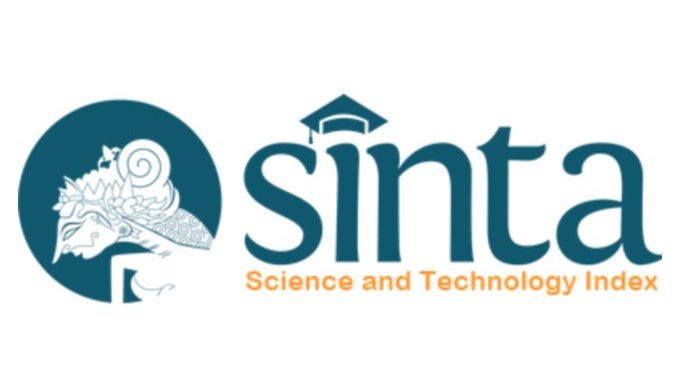Diagnosis dan Tata Laksana Eritroderma
DOI:
https://doi.org/10.55175/cdk.v51i6.1086Kata Kunci:
Dermatitis eksfoliatif, eritroderma, Inflamasi, kelainan kulit, skuama kulitAbstrak
Eritroderma atau dermatitis eksfoliatif merupakan kelainan kulit berupa inflamasi difus dengan karakteristik kemerahan dan skuama kulit yang mengenai lebih dari 90% luas permukaan tubuh. Angka kejadian eritroderma berkisar 1 per 100.000 orang dewasa dengan kematian 16% setiap tahun, terutama pada pasien dengan imunodefisiensi. Beberapa penyebab utama di antaranya psoriasis (23%), dermatitis atopik (16%), reaksi hipersensitivitas obat (15%), dan cutaneous T-cell lymphoma (CTCL) atau sindroma Sezary (5%). Eritroderma adalah kondisi yang berpotensi mengancam jiwa yang memerlukan diagnosis, identifikasi etiologi, dan penatalaksanaan yang tepat.
Unduhan
Referensi
Khaled A, Sellami A, Fazaa B, Kharfi M, Zeglaoui F, Kamoun MR. Acquired erythroderma in adults: A clinical and prognostic study. J Eur Acad Dermatology Venereol. 2010;24:781–8.
Grant-Kels JM, Fedeles F, Rothe MJ. Exfoliative dermatitis. In: Goldsmith LA, Katz SI, Gilchrest BA, et al, editors. Fitzpatrick’s dermatology in general medicine, 8e. Chapter 23. New York: The McGraw-Hill Co.; 2012.
Okoduwa C, Lambert WC, Schwartz RA, Kubeyinje E, Eitokpah A, Sinha S, et al. Erythroderma: Review of a potentially life-threatening dermatosis. Indian J Dermatol. 2009;54:1–6.
Shirazi N, Jindal R, Jain A, Yadav K, Ahmad S. Erythroderma: A clinico-etiological study of 58 cases in a tertiary hospital of North India. Asian J Med Sci. 2015;6:20–4.
Willerslev-Olsen A, Krejsgaard T, Lindahl LM, Bonefeld CM, Wasik MA, Koralov SB, et al. Bacterial toxins fuel disease progression in cutaneous T-cell lymphoma. Toxins (Basel) 2013;5:1402–21.
Salami TAT, Enahoro Oziegbe O, Omeife H. Exfoliative dermatitis: Patterns of clinical presentation in a tropical rural and suburban dermatology practice in Nigeria. Int J Dermatol. 2012;51:1086–9.
Ellis J, Lew J, Brahmbhatt S, Gordon S, Denunzio T. Erythrodermic psoriasis causing uric acid crystal nephropathy. Case Rep Med. 2019;2019:8165808.
Miyashiro D, Sanches JA. Erythroderma: A prospective study of 309 patients followed for 12 years in a tertiary center. Sci Rep. 2020;10:9774.
Hoxha S, Fida M, Malaj R, Vasili E. Erythroderma: A manifestation of cutaneous and systemic diseases. EMJ Allergy Immunol [Internet]. 2020. Available from: https://www.emjreviews.com/allergy-immunology/article/erythroderma-a-manifestation-of-cutaneous-and-systemicdiseases/?site_version=EMJ. DOI: 10.33590/emjallergyimmunol/19-00182.
Cuellar-Barboza A, Ocampo-Candiani J, Herz-Ruelas ME. A practical approach to the diagnosis and treatment of adult erythroderma. Actas Dermosifiliogr. 2018;109:777–90.
Mistry N, Gupta A, Alavi A, Sibbald RG. A review of the diagnosis and management of erythroderma (generalized red skin). Adv Ski Wound Care 2015;28:228–36.
Bernengo MG, Quaglino P. Erythrodermic CTCL: Updated clues to diagnosis and treatment. G Ital di dermatologia e Venereol organo Uff Soc Ital di Dermatologia e Sifilogr. 2012;147:533–44.
Bruno TF, Grewal P. Erythroderma: A dermatologic emergency. CJEM. 2009;11:244–6.
Lo Y, Tsai TF. Updates on the treatment of erythrodermic psoriasis. Psoriasis (Auckland, NZ) 2021;11:59–73.
Singh RK, Lee KM, Ucmak D, Brodsky M, Atanelov Z, Farahnik B, et al. Erythrodermic psoriasis: Pathophysiology and current treatment perspectives. Psoriasis (Auckland, NZ) 2016;6:93–104.
Shao S, Wang G, Maverakis E, Gudjonsson JE. Targeted treatment for erythrodermic psoriasis: Rationale and Recent Advances. Drugs 2020;80:525–34.
Wan J. Atopic dermatitis and erythroderma. In: Rosenbach M, Wanat KA, Micheletti RG, et al, editors. Inpatient dermatology. Cham: Springer Internat Publ; 2018. p. 299–302.
Gelbard CM, Hebert AA. New and emerging trends in the treatment of atopic dermatitis. Patient Prefer Adherence 2008;2:387–92.
Wróbel J, Tomczak H, Jenerowicz D, Czarnecka-Operacz M. Skin and nasal vestibule colonisation by Staphylococcus aureus and its susceptibility to drugs in atopic dermatitis patients. Ann Agric Environ Med. 2018;25:334–7.
Geoghegan JA, Irvine AD, Foster TJ. Staphylococcus aureus and atopic dermatitis: A complex and evolving relationship. Trends Microbiol. 2018;26:484–97.
Jadotte YT, Schwartz RA, Karimkhani C, Boyers LN, Patel SS. Drug eruptions and erythroderma. In: Hall JC, Hall BJ, editors. Cutaneous drug eruptions: Diagnosis, histopathology and therapy. London: Springer London; 2015. p. 251–8.
Cuellar-Barboza A, Ocampo-Candiani J, Herz-Ruelas ME. A practical approach to the diagnosis and treatment of adult erythroderma. Actas DermoSifiliográficas (English Ed) 2018;109:777–90.
Katsarou A, Armenaka M. Atopic dermatitis in older patients: Particular points. J Eur Acad Dermatol Venereol. 2011;25:12–8.
Effendy KM, Sukohar A. Eritroderma et causa erupsi obat pada wanita berusia 50 tahun. J Medula Unila 2017;7:70.
Fujimura T, Amagai R, Kambayashi Y, Aiba S. Topical and systemic formulation options for cutaneous T cell lymphomas. Pharmaceutics 2021 Feb;13(2):200.
Unduhan
Diterbitkan
Cara Mengutip
Terbitan
Bagian
Lisensi
Hak Cipta (c) 2024 Nurrul Izza Misturiansyah, Umi Miranti, Ayu Lilyana Nuridah, Muhammad Irsyad Amien, R. Ristianto Yoga

Artikel ini berlisensi Creative Commons Attribution-NonCommercial 4.0 International License.





















